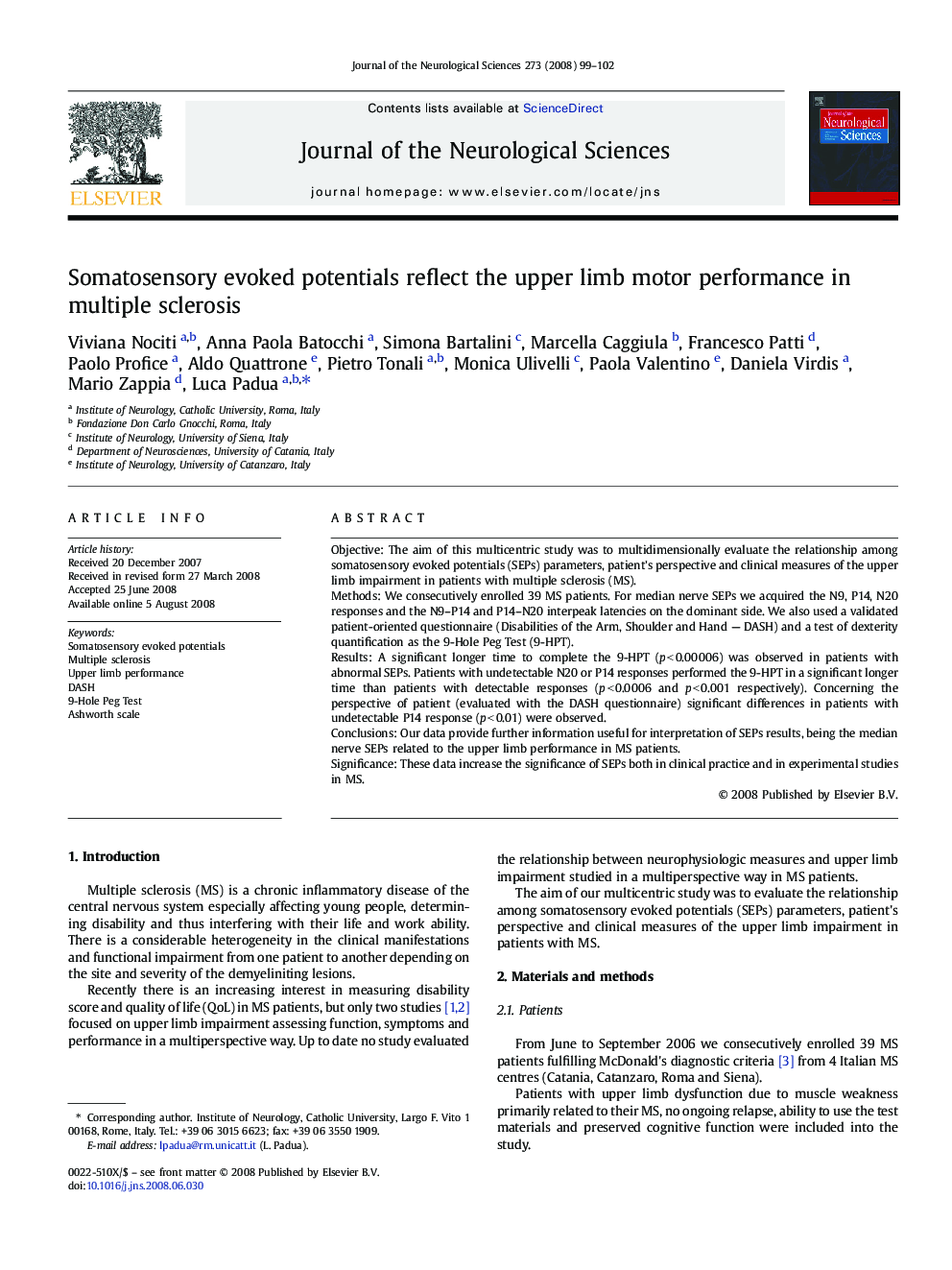| کد مقاله | کد نشریه | سال انتشار | مقاله انگلیسی | نسخه تمام متن |
|---|---|---|---|---|
| 1915709 | 1535189 | 2008 | 4 صفحه PDF | دانلود رایگان |

ObjectiveThe aim of this multicentric study was to multidimensionally evaluate the relationship among somatosensory evoked potentials (SEPs) parameters, patient's perspective and clinical measures of the upper limb impairment in patients with multiple sclerosis (MS).MethodsWe consecutively enrolled 39 MS patients. For median nerve SEPs we acquired the N9, P14, N20 responses and the N9–P14 and P14–N20 interpeak latencies on the dominant side. We also used a validated patient-oriented questionnaire (Disabilities of the Arm, Shoulder and Hand — DASH) and a test of dexterity quantification as the 9-Hole Peg Test (9-HPT).ResultsA significant longer time to complete the 9-HPT (p < 0.00006) was observed in patients with abnormal SEPs. Patients with undetectable N20 or P14 responses performed the 9-HPT in a significant longer time than patients with detectable responses (p < 0.0006 and p < 0.001 respectively). Concerning the perspective of patient (evaluated with the DASH questionnaire) significant differences in patients with undetectable P14 response (p < 0.01) were observed.ConclusionsOur data provide further information useful for interpretation of SEPs results, being the median nerve SEPs related to the upper limb performance in MS patients.SignificanceThese data increase the significance of SEPs both in clinical practice and in experimental studies in MS.
Journal: Journal of the Neurological Sciences - Volume 273, Issues 1–2, 15 October 2008, Pages 99–102